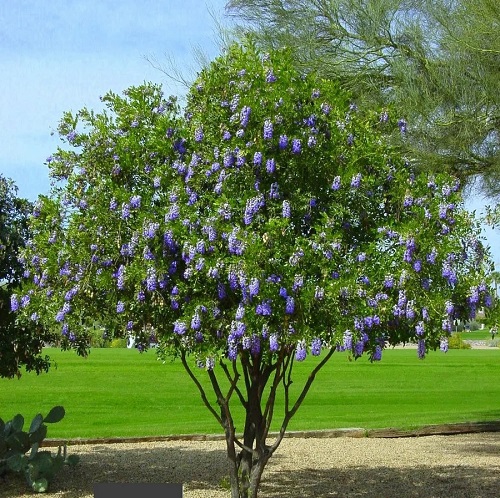Learn about these fascinating trees that start with T and discover their unique appearance, features, and usage!
When it comes to enhancing the charm of your garden, trees that start with T offer several choices. Each, with its elegant size, beautiful flowers, and juicy fruit, is sure to add depth and beauty to your outdoor space!
Trees that Start with T
1. Tobacco Tree
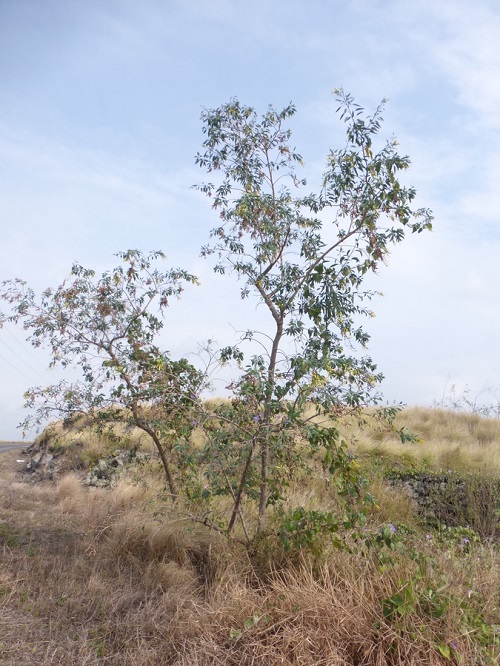
Botanical Name: Nicotiana glauca
The Tobacco Tree, with its long, bluish-green leaves, stands out in any garden. Its yellow-green, tubular flowers have a pleasant fragrance that draws in pollinators like bees and butterflies. While the plant is interesting and adds beauty, be cautious as it contains toxic elements.
2. Toyon

Botanical Name: Heteromeles arbutifolia
Toyon, also called California Holly, is a versatile plant with shiny, serrated leaves and clusters of small white flowers. In winter, these flowers turn into bright red berries, which are not only eye-catching but also attract birds. The berries are often used to make a traditional jelly, and the plant is a festive symbol in California during the holiday season.
3. Toothache Tree
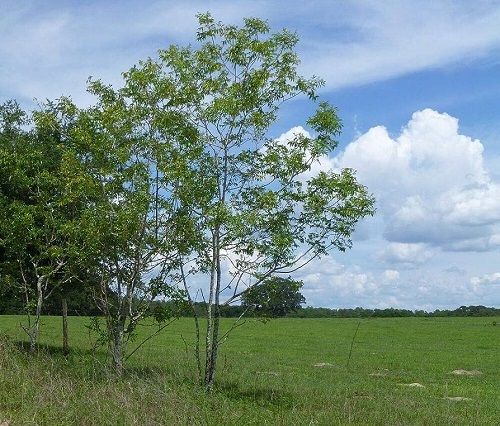
Botanical Name: Zanthoxylum clava-herculis
The Toothache Tree is aptly named for its numbing bark, historically used to relieve toothaches. This spiny tree has aromatic leaves and small, greenish-yellow flowers. It’s a unique addition to medicinal gardens and is also great for attracting birds and insects.
4. Titi

Botanical Name: Cyrilla racemiflora
Titi, also known as Swamp Cyrilla, thrives in wet, marshy areas. It features leathery leaves and delicate white flowers. It contributes to the ecological balance of wetlands by providing habitat and food for various wildlife, making it an excellent choice for wetland restoration projects.
5. Tamaricaceae
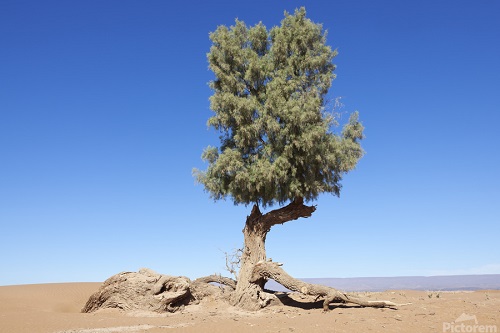
Botanical Name: Tamarix spp.
Tamaricaceae, commonly known as Tamarisk, showcases feathery pink or white flowers on its slender branches. This plant thrives in dry, salty soils, making it useful for controlling erosion. However, be aware that in some places, it’s considered invasive and can overtake native plants.
6. Thornless Honeylocust

Botanical Name: Gleditsia triacanthos
The Thornless Honeylocust is a great shade tree with fine-textured leaves that let light filter through, creating a dappled effect. It’s perfect for urban landscapes since it has no thorns and can handle pollution and poor soil. The small flowers are a bonus for attracting pollinators.
7. Tulip Tree
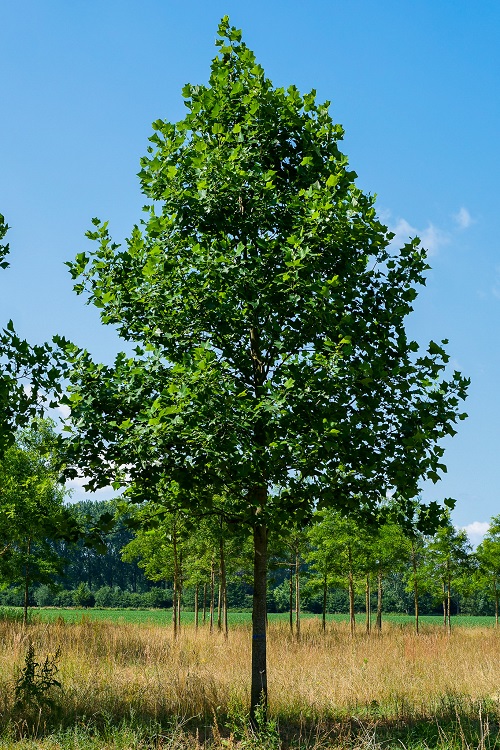
Botanical Name: Liriodendron tulipifera
The Tulip Tree, or Yellow Poplar, is known for its distinctive tulip-shaped leaves and large, beautiful yellow-green flowers with a touch of orange. These trees can grow quite tall, making them perfect for larger gardens or parks. The wood is also used for making furniture and other woodwork due to its fine grain.
8. Thundercloud Plum

Botanical Name: Prunus cerasifera ‘Thundercloud’
The Thundercloud Plum captivates with its reddish-purple leaves, creating a dramatic visual impact. It features delicate pink flowers in spring that look mesmerizing against the deep purple backdrop.
9. Texas Mountain Laurel
Botanical Name: Sophora secundiflora
The Texas Mountain Laurel is cherished for its clusters of fragrant, grape-scented flowers and glossy evergreen leaves. Native to the southwest, it thrives in arid conditions and adds an enchanting touch to xeriscape gardens.
10. Tupelo

Botanical Name: Nyssa sylvatica
Tupelo, or Black Gum, boasts glossy green leaves that transform into vibrant shades of red and purple in the fall. Its small flowers are inconspicuous but give way to bluish-black berries attracting wildlife.
11. Texas Red Oak
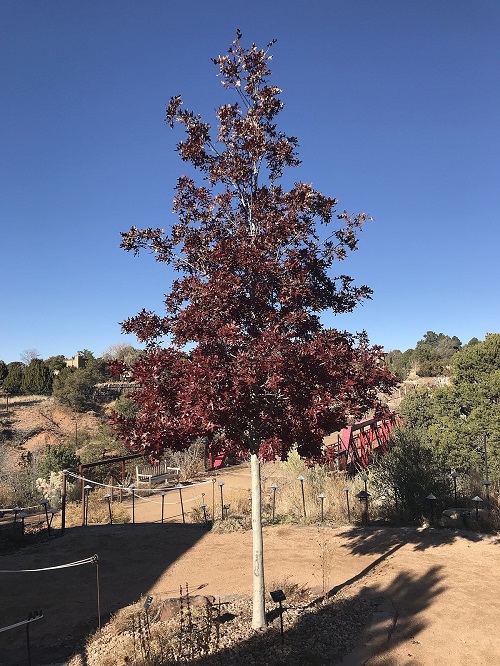
Botanical Name: Quercus buckleyi
The Texas Red Oak graces gardens with its broad canopy and deep green, lobed leaves. In the fall, these leaves turn brilliant shades of red and orange, providing a fiery display of color.
12. Tree of Heaven

Botanical Name: Ailanthus altissima
The Tree of Heaven is known for its rapid growth and compound leaves that resemble fern fronds. However, managing its growth is essential, as it can become invasive in no time.
13. Tallow Tree
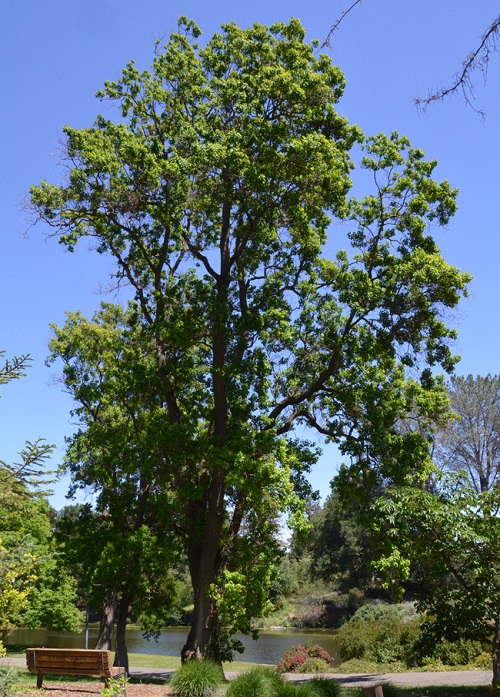
Botanical Name: Sapium sebiferum
The Tallow Tree stands out with its three-lobed leaves and ornamental clusters of white, pink, or red berries. Its vibrant fall foliage and unusual fruits make it a garden conversation piece.
14. Tamarack

Botanical Name: Larix laricina
The Tamarack, also known as Eastern Larch, is a unique type of conifer because it sheds its needles in the winter, unlike most conifers. In the fall, its needles turn a beautiful golden yellow, creating a stunning display. It’s often found in cooler, wet areas like bogs and wetlands. The wood from Tamarack is valued for its durability and is used in construction and boat building.
15. Tamarind Tree
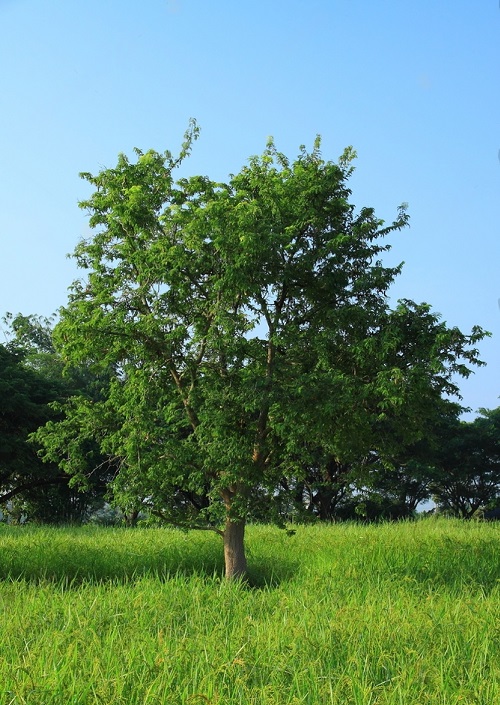
Botanical Name: Tamarindus indica
The Tamarind Tree is famous for its tangy fruit pods, which are used in cooking, especially in Indian and Southeast Asian dishes. The tree has delicate, feathery leaves and is valued not only for its fruit but also for its wood, which is used in making furniture. Tamarind is also significant in traditional medicine.
16. Tamarisk

Botanical Name: Tamarix africana
The African Tamarisk has delicate pink flowers that grow in dense clusters along its branches. This tree is highly salt-tolerant, making it ideal for coastal areas. It’s also used for erosion control and as a windbreak. However, in some places, it’s considered invasive due to its fast growth.
17. Tara
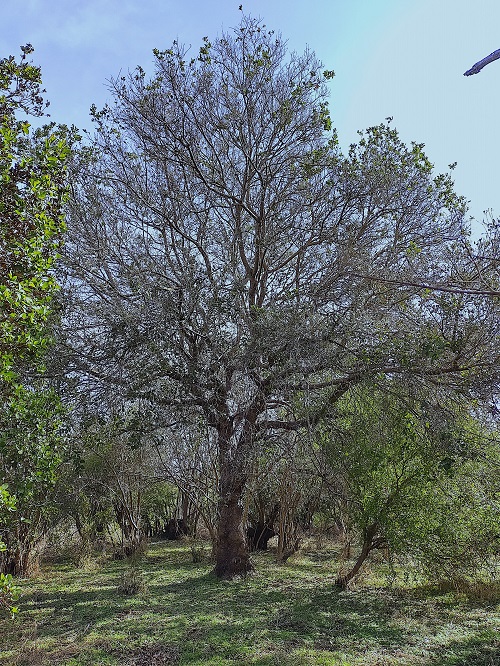
Botanical Name: Tara spinosa
The tara plant, or Spiny Holdback, is known for its striking purple flowers and thorny branches. Its pods are used to make natural dyes and tanning leather, and it’s also known for its medicinal uses. The tara plant thrives in dry climates and is often found in South America.
18. Temu

Botanical Name: Luma apiculata
The Temu boasts aromatic leaves and small white flowers, followed by dark berries. Its compact growth and pleasant fragrance make it a delightful addition to gardens.
19. Torreya Tree
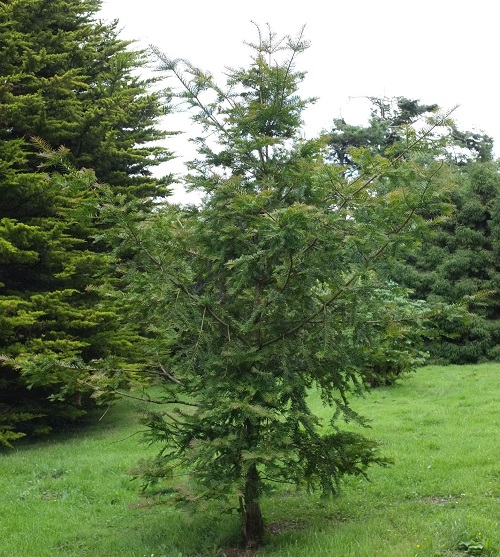
Botanical Name: Torreya taxifolia
The Torreya Tree is an evergreen tree native to the southeastern United States. It has needle-like leaves and produces small, fleshy seeds. The wood from this tree is highly valued for being resistant to pests, making it useful in specialized woodworking. The Torreya Tree is rare and considered endangered, with ongoing conservation efforts to protect and restore its natural habitat.
20. Tabebuia

Botanical Name: Tabebuia spp.
Known for its vibrant, trumpet-shaped flowers that range from pink to yellow, this tropical tree is a stunning spring bloomer. The Tabebuia is commonly used in street plantings.
21. Thuya
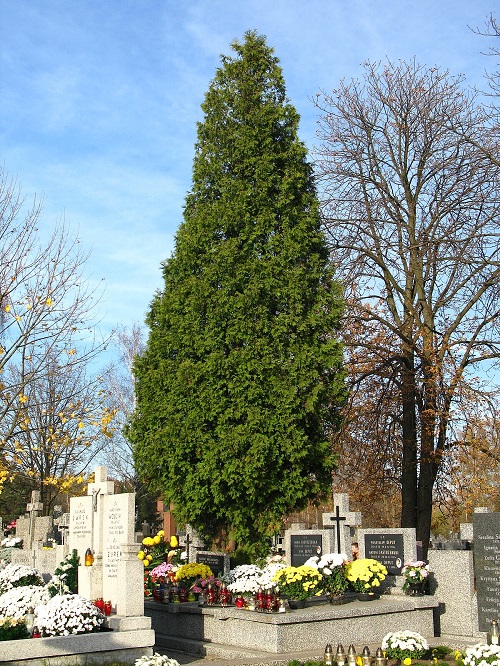
Botanical Name: Thuja occidentalis
Also known as Eastern Arborvitae, Thuya is an evergreen tree with scale-like leaves. These Trees that Start with T are often used for privacy hedges due to their dense foliage.
22. Tung Tree

Botanical Name: Vernicia fordii
The Tung Tree is a deciduous tree primarily native to China but also found in other parts of Asia and the southern United States. It is renowned for its seeds, which yield tung oil, an essential component in paints, varnishes, and other chemical coatings.
23. Turkey Oak

Botanical Name: Quercus laevis
The Turkey Oak is a native North American species in the southeastern United States. It’s a part of the larger oak family known for its distinctive, turkey-foot-shaped leaves.
24. Terminalia

Botanical Name: Terminalia spp.
Famous for its strong wood and dense canopy, Terminalia species are commonly found in tropical regions. Reaching as tall as 30-80 feet, these trees also have medical properties.
25. Tasmanian Blue Gum

Botanical Name: Eucalyptus globulus
The Tasmanian Blue Gum is an evergreen tree native to Tasmania and southeastern Australia. It’s most famous for its oil, used for its antiseptic qualities, and in various industrial applications.
26. Teak

Botanical Name: Tectona grandis
Teak is a tropical hardwood tree species native to Southeast Asia but cultivated in various parts of the world. Known for its durable and weather-resistant wood, teak is widely used in furniture, boat building, and flooring.
27. Tonka Bean Tree
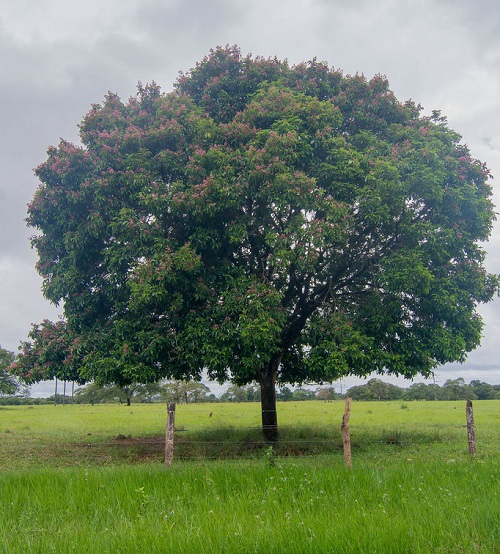
Botanical Name: Dipteryx odorata
Native to Central and South America, the Tonka Bean Tree is famous for its seeds, which are aromatic and often used in perfumery and as a vanilla substitute in certain culinary contexts
28. Toog Tree

Botanical Name: Petersianthus quadrialatus
The Toog Tree is a tropical tree native to the Philippines and Southeast Asia. It’s primarily known for its hardwood used for various construction purposes.
29. Two-wing Silverbell

Botanical Name: Halesia diptera
Known for its bell-shaped, white flowers in spring, this tree adds ornamental beauty to gardens. It is native to the southeastern United States and grows upto 35-40 feet.
30. Trichilia

Botanical Name: Trichilia spp.
Native to tropical regions, Trichilia trees are known for their medicinal properties and durable wood. They thrive in well-drained soils under full to partial sunlight.
31. Turpentine Tree
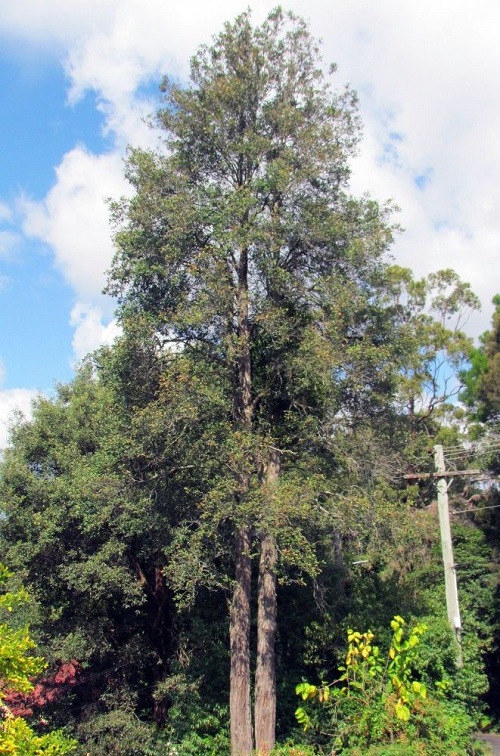
Botanical Name: Syncarpia glomulifera
Native to Australia, this evergreen tree is a source of commercial turpentine. Its leaves are lance-shaped and bear small white flowers, thriving in temperate climates with full sun exposure.
32. Tristania

Botanical Name: Tristania spp.
Common in Australia and New Zealand, Tristania trees are primarily ornamental, featuring attractive bark and flowers. They prefer moist, well-drained soils and can adapt to various sunlight conditions.
33. Tagasaste

Botanical Name: Cytisus proliferus
Originating from the Canary Islands, Tagasaste is a fast-growing shrub or small tree used for fodder and soil improvement. Its fragrant, pea-like flowers attract pollinators.
34. Traveller’s Palm

Botanical Name: Ravenala madagascariensis
Though not a true palm, this Madagascar native has fan-like leaves that align in a north-south direction, historically used by travelers for navigation.

